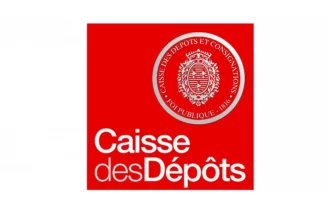Turkey began 2008 in the shadow of a very heated debate over whether female students could cover their hair with a headscarf — a practice banned in Turkey since 1989. In February 2008, the Justice and Development Party (AKP), a “conservative” party led by devout Muslims, with the support of two other parties, passed an amendment that inserted two clauses into the constitution. One of them stated that all citizens, regardless of their religion, race, or ethnicity, would “benefit from public services equally.” The other amendment provided a guarantee: “No citizen can be barred from the right to higher education.”
To the secularist establishment, however, these declarations constituted an unacceptable heresy. The Constitutional Court stepped in nullifying the amendment and also levying a hefty fine on the AKP for violating the country’s self-styled secularism.
In the middle of this peculiar political controversy — during which “freedom” and “secularism” had become opposing and polarising slogans — an interesting voice emerged from female students wearing headscarves, whose right to education was being discussed. On a website titled “We Are Not Free Yet,” three hundred students put their signatures in support of a statement which mentioned an “authoritarian mentality” and tied this struggle to that of suppressed groups like the Kurds and Alevis.This genuinely liberal and Islamic message immediately became popular.
How all this came about is a story worth examining in the lessons that can be learnt for similar situations in the current Middle East.
History Revisited
The story above serves to highlight that Turkey is still the best example of a functioning democracy in the Middle East. Its Islamic movements and parties have almost never followed a radical agenda, and have even come to appreciate the blessings of modern liberal democracy. Therefore, the Turkish model has been cited as a source of inspiration for countries emerging out of the events of the Arab Spring.
There are two good reasons to doubt that the Arab world only needs its own Atatürks, however. The founder of the Turkish Republic, Mustafa Kemal Atatürk, had introduced radical secularist reforms in 1924 and 1938. Firstly, most of the regimes overthrown or challenged by the Arab Spring are the very secular dictatorships which used Atatürk as a model. Secondly, the Turkish story is much more complex than the ‘creation-ex-nihilo-by-Atatürk’ narrative.
Ottoman Delight
One should note that the pre-“Kemalist” Ottoman Turkey was not “the age of darkness” as official Turkish literature has claimed for decades. By curbing the powers of the Sultan and introducing the concept of modern citizenship, the Ottoman Empire had begun its modernization at least a century before the Turkish Republic. The modern Turkish Republic owed much to its Ottoman predecessors.
Secularism In, Democracy Out
Whereas the Ottomans had tried to create a synthesis of Islam and modernity, the Kemalists tried to minimize the role of religion in society through the use of state power. In the run-up to Turkey’s “single party regime” (1925-1950), alternative visions were oppressed and the pagan culture of the pre-Islamic Turks was glorified. The Kemalist Revolution was a great leap forward for secularization, but a great regress for democracy emerging in the late Ottoman period.
The Turning Point (1950)
Turkey’s “spring” came in 1950 when the country had its first free and fair elections. Turkey’s alignment with the “free world” under Atatürk’s successor meant a transition to democracy. This was helped by the democratic roots planted in the Ottoman period. In 1950, the center-right Democrat Party’s (DP) Adnan Menderes was elected prime minister. Amongst his supporters were the pious Muslims of Turkey, who realized that democracy would bring them enhanced religious freedom. However, the Kemalist “center” — the bureaucracy, the military, the judiciary, and the universities — orchestrated a military coup against Menderes on May 27, 1960. The “Turkish Spring” which had begun so positively in 1950, by transferring political power peacefully via free and fair elections, had been crushed a decade later by a military junta.
The following fifty years would see a “Turkish model” with secularists becoming the best allies of the military, seeing the latter as the “guardians of the republic” — the republic being a euphemism for a Kemalist oligarchy. Ironically, the Islamic camp increasingly became the champion of democracy.
The Özal Revolution
After another military coup in 1980, Turgut Özal, leader of the newly formed Motherland Party, came to power when the generals scheduled national elections for 1983. The following “Özal decade” was a revolutionary age of liberalization during which the Islamo-liberal synthesis was reborn. Özal, was able to “restore religion to Turkey’s political space without threatening the country’s pro-Western orientation.”
As part of his three freedoms policy (ideas, religion, and enterprise), the economy opened up, the Kurds gained more rights and Özal tried to restore respect for the Ottomans. The Islamic camp started to realize that their yearning for religious freedom could be satisfied by adopting Western-style liberal democracy, rather than the Islamist utopia that the Islamist movement of Erbakan had been promising.
The Last Coup
In April 1993, Özal suddenly died of a heart attack at the age of sixty-six. The next nine years in Turkish politics, until the arrival of the AKP in November 2002, has sometimes been called “the lost decade,” because it saw a series of inefficient and unsuccessful coalitions. However, it saw the rise of Erbakan’s Islamist Welfare Party to power in 1996. In response to this Islamist challenge, on February 28, 1997, the military successfully orchestrated the whole Kemalist “center” to force the government to resign. The Welfare Party was closed down and its rising star, Recep Tayyip Erdoğan, was imprisoned for “inciting hatred” against the Kemalist regime.
The AKP´s Path to Post-Islamism
Abdullah Gül and Erdoğan joined forces in 2001 to form the Justice and Development Party (AKP). The AKP declared that it was not “a political party with a religious axis”; it defined its ideology as “democratic conservatism.” After rising to power through elections in November 2002, this post-Islamist party initiated a number of democratic reforms and turned out to be the most dedicated and successful pursuer of Turkey’s bid to join the EU. Kemalist forces had never trusted the AKP, and insisted on calling its members “Islamists”, asserting that the party’s transformation was just a trick to deceive outsiders. Some Western observers also believed that any party made up of devout Muslims must be illiberal and undemocratic.
Yet the AKP’s post-Islamist position was genuine, for a few good reasons. First, the AKP’s new direction of “democratic conservatism” had its roots among Islamic liberals of the Ottoman Empire, and in the center-right tradition of Turkish politics. Second, the AKP’s political transformation was in line with classical liberalism, an idea popular in the late Ottoman Empire but denounced by the Kemalist Republic. The third factor that helps to explain the transformation of the AKP was a gift from Özal to Turkey: free market capitalism. Ultimately it was this factor that was so definitive and vital to the change in Turkish Islam.
The Rise of Islamic Capitalism
As I argue in my book, Islam Without Extremes: A Muslim Case for Liberty, Islam was born as a business-friendly religion. The subsequent rise of “Islamic capitalism” facilitated the dynamism and splendor of Islamic civilization, while its decline resulted in the stagnation and eventual decline of Islamdom. Even though the Ottoman efforts led to the appearance of a Muslim middle class, the development was very limited in scope and the bourgeoisie remained primarily non-Muslim until the fall of the empire.
Both the formation and the composition of a state-made “national bourgeoisie” under the Kemalist regime were unfair, clearly favoring urbanites. Meanwhile, religion survived mainly among the less privileged. By liberalising the economy, Özal’s created a space for Islamic-minded entrepreneurs. Economists started to talk about the “Anatolian Tigers” — companies founded in the conservative cities of Anatolia that quickly utilised the groundbreaking opportunities for manufacturing and exporting in the brave new world of the free market, but who also had their roots in Islamic practice.
The ‘Calvinists’ of Islam
One of the urban centers that gave rise to the Anatolian Tigers was Kayseri, which experienced an industrial boom from the mid-1980s onward. The 2005 report, “Islamic Calvinists” by the European Stability Initiative (ESI), emphasized the crucial role of religion in the motivation of these entrepreneurs. “Individualistic, pro-business currents” went hand in hand with a strong sense of social responsibility, as emphasized by Islam.
The AKP’s political transformation was not unrelated to the interests of these Islamic Calvinists, who needed a Turkey that could be integrated into the global economy.
The Muslim Middle Class
In July 2009, the founder of MÜSIAD, Erol Yarar, noted that Muslim entrepreneurs were creating a capitalism inspired by their religious values; on the other hand, their religious values were being altered by their engagement in capitalism. Engagement with the modern world as equal partners has ameliorated formerly negative attitudes toward it.
The Islamic Calvinists have also created a new generation of Muslim professionals. In just two decades—from the mid-1980s to the mid-2000s—a “Muslim middle class” emerged, to the shock of the secularists. As its social context changed, this middle class started to change its political attitudes. One example was the decline of Islamism.
The Turkish Model – Democracy and the Market Economy
This is the story that lies behind the makeup and the success of Turkey’s AKP. In a nutshell, in the past eighty year, a large part of Turkish society remained piously Muslim but, thanks to their access to democracy since 1950, Turkey’s Islamic movements gradually became the champions of democracy.
Whereas throughout the Middle East the secularist-Islamist divide is often also a class conflict, Turkey’s “Islamist Calvinists” have overcome this added layer by adopting a cosmopolitan mindset.
Therefore, Turkey´s secret lies in the combination of the secularist legacy of Atatürk and the “conservative” legacy of Menderes, Özal, and lately Erdoğan. The Turkish model, if other Muslim nations ever need one, is about how to be modern and Muslim at the same time.






